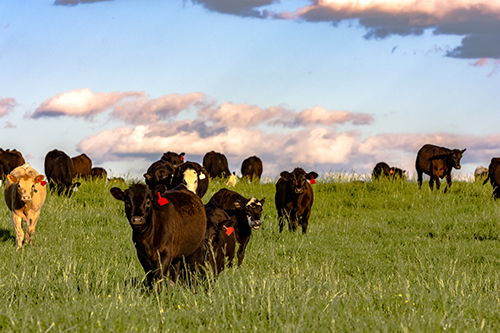What is CRF?
May 31, 2022

Founded in 1954, the unique partnership called Cooperative Research Farms (CRF) is comprised of prominent feed manufacturers serving livestock and poultry producers and equine owners. CRF is considered one of the leaders in advanced nutrition, developing groundbreaking concepts for animal nutrition research, cultivating human resources, and providing long-term financial commitment for the associations mission. Animal agriculture continues to evolve at a rapid pace. CRF’s scientists and our members’ nutritionists have led the way in the search for more efficient ways to produce meat, milk, and eggs.
The combined feed and ingredient sales of CRF members represent billions of dollars and millions of tons. Thus, the scale of the CRF partnership allows the members to share in the direction of a multi-million dollar annual research budget and to transfer the latest in nutrition technology to animal agriculture — all at a cost unmatched in the worldwide feed industry. CRF operates on basic cooperative principles and demonstrates how feed manufacturers can work together to provide economies of scale and synergism in innovative thinking. The sharing of talent has reduced research costs, improved the quality of data collected, and provided a means for exploring new areas of investigation. The concept of the CRF organization allows the members to produce products for livestock and poultry producers that allow them to prosper while providing the consuming public with low cost, abundant, and wholesome food.
The members, essentially the owners, of CRF are leading feed companies and cooperatives that develop, manufacture, and distribute quality animal nutrition products across a vast territory. Despite the extensive geography covered by these members, they share the common objective of aspiring to be the Leaders in Advanced Nutrition.
CRF is an effective partnership for the improvement of animal agriculture with 67 years of history in innovations, resulting from over 3,250 large scale research trials. Research is a commitment, and our members have demonstrated their dedication to this endeavor as shown by their combined years of participation. Each member of CRF contributes people, funding, and most importantly the original research concepts to the operations of this large, cost-effective organization. The combined scope of the CRF members represents:
• Over 2,080,000 metric tons of actual manufactured feeds
• More than 13,000,000 metric tons of final feed equivalents, or as we say “fed on the farm”
• A production network of 45 member-owned feed mills manufacturing feeds of the highest quality
• A dedicated workforce of 1,615 employees that provide superior animal nutrition products
• A research and development and technical support team of 93 highly skilled individuals
• Members conducting business in 48 countries
Tennessee Farmers Co-op has been a member of CRF for more than 57 years and Co-op Feeds nutritionists take active roles in directing research projects conducted around the world. Therefore, Co-op feed products are based on a firm foundation of research and proven results on the farm.
For more content like this, check out the latest issue of the Cooperator.
The combined feed and ingredient sales of CRF members represent billions of dollars and millions of tons. Thus, the scale of the CRF partnership allows the members to share in the direction of a multi-million dollar annual research budget and to transfer the latest in nutrition technology to animal agriculture — all at a cost unmatched in the worldwide feed industry. CRF operates on basic cooperative principles and demonstrates how feed manufacturers can work together to provide economies of scale and synergism in innovative thinking. The sharing of talent has reduced research costs, improved the quality of data collected, and provided a means for exploring new areas of investigation. The concept of the CRF organization allows the members to produce products for livestock and poultry producers that allow them to prosper while providing the consuming public with low cost, abundant, and wholesome food.
The members, essentially the owners, of CRF are leading feed companies and cooperatives that develop, manufacture, and distribute quality animal nutrition products across a vast territory. Despite the extensive geography covered by these members, they share the common objective of aspiring to be the Leaders in Advanced Nutrition.
CRF is an effective partnership for the improvement of animal agriculture with 67 years of history in innovations, resulting from over 3,250 large scale research trials. Research is a commitment, and our members have demonstrated their dedication to this endeavor as shown by their combined years of participation. Each member of CRF contributes people, funding, and most importantly the original research concepts to the operations of this large, cost-effective organization. The combined scope of the CRF members represents:
• Over 2,080,000 metric tons of actual manufactured feeds
• More than 13,000,000 metric tons of final feed equivalents, or as we say “fed on the farm”
• A production network of 45 member-owned feed mills manufacturing feeds of the highest quality
• A dedicated workforce of 1,615 employees that provide superior animal nutrition products
• A research and development and technical support team of 93 highly skilled individuals
• Members conducting business in 48 countries
Tennessee Farmers Co-op has been a member of CRF for more than 57 years and Co-op Feeds nutritionists take active roles in directing research projects conducted around the world. Therefore, Co-op feed products are based on a firm foundation of research and proven results on the farm.
For more content like this, check out the latest issue of the Cooperator.